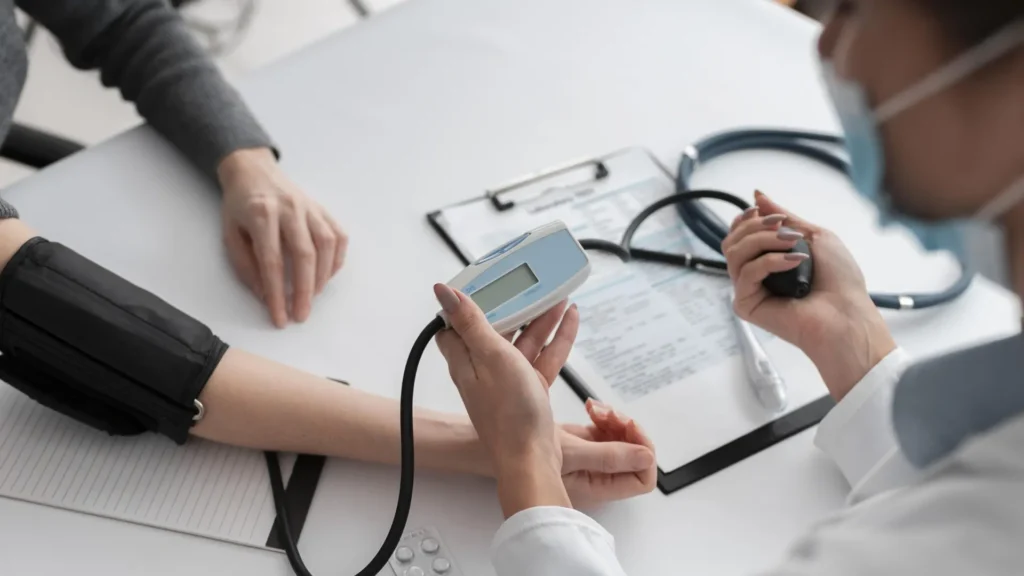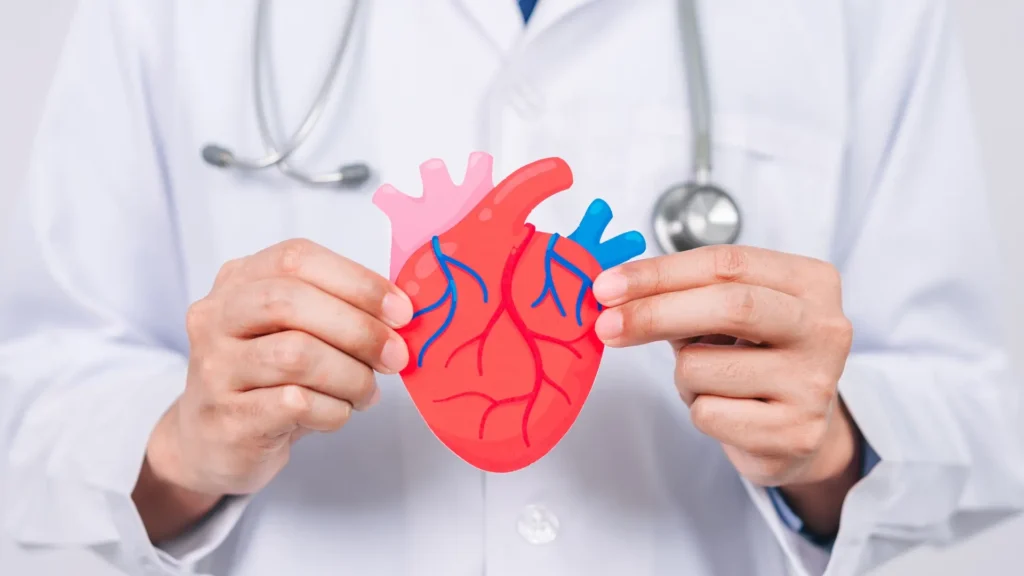Cardiac dysrhythmias, also known as arrhythmias, are abnormalities in the heart’s rhythm. These electrical misfires can cause the heart to beat too fast, too slow, or with an irregular pattern. While some people with dysrhythmias may not even notice a flutter, others can experience dizziness, shortness of breath, or even fainting spells.
But the impact of dysrhythmias goes beyond just feeling a little off-kilter. These rhythm disturbances can have serious consequences, from reducing the heart’s efficiency to pump blood, to increasing the risk of stroke or cardiac arrest. In fact, dysrhythmias contribute to hundreds of thousands of deaths each year in the United States alone.
So what causes the heart to go rogue? The triggers can range from the common, like stress and caffeine, to the complex, like underlying heart disease or genetic disorders. Some dysrhythmias may be fleeting, while others can be persistent or even permanent.
But here’s the good news: most dysrhythmias are treatable. With the right diagnosis and management, the majority of people with dysrhythmias can lead full, active lives. From medications that help control the heart’s rhythm, to procedures that reset the electrical system, to implantable devices that act as a 24/7 rhythm patrol, there are a variety of tools in the dysrhythmia toolbox.
In this article, we’ll explore the different types of dysrhythmias, their causes and symptoms, and the latest approaches to diagnosis and treatment. Whether you’re a medical professional looking to stay up-to-date, or a curious reader wanting to understand this common cardiac condition, this article will provide a comprehensive, yet engaging look at the complex cadence of cardiac dysrhythmias.
What are Cardiac Dysrhythmias?

Cardiac Dysrhythmias, also known as Arrhythmias, are abnormalities in the heart’s rhythm. The heart normally beats in a regular, coordinated way, with electrical impulses traveling through the heart’s four chambers to cause contraction and relaxation. However, when these electrical impulses are disrupted, the heart may beat too fast, too slow, or in an irregular pattern. Therefore, these abnormal rhythms can affect the heart’s ability to pump blood effectively and can lead to various symptoms and complications.
Is Dysrhythmia and Arrhythmia the same?
Yes, the terms dysrhythmia and arrhythmia refer to the same condition – an abnormal or irregular heartbeat. Both terms are used interchangeably by medical professionals to describe a heart rate that is too fast, too slow, or has an irregular rhythm.
The prefix “a-” in arrhythmia means a lack or absence of something, in this case, a lack of normal rhythm. The prefix “dys-” in dysrhythmia means something is difficult or doesn’t work properly, referring to an abnormal rhythm. Despite the slight difference in their linguistic meanings, both terms are used to describe the same heart condition.
Historically, there was a debate among doctors about which term was more accurate. Some argued that “dysrhythmia” was a more precise term, while others defended the traditional use of “arrhythmia.” However, in modern medical practice, both terms are accepted and used interchangeably to refer to abnormal heart rhythms.
What are the different types of Dysrhythmias?
Cardiac dysrhythmias can be classified into several categories based on the heart rate and the location of the electrical disturbance. Here are the main types of dysrhythmias:
Bradyarrhythmias (slow heart rate)
- Sinus bradycardia: A slow heart rate (typically less than 60 beats per minute) that originates from the sinus node, the heart’s natural pacemaker.
- Heart block: A delay or interruption in the electrical signal transmission from the atria to the ventricles, leading to a slow heart rate.
Tachyarrhythmias (fast heart rate)
- Supraventricular tachycardia (SVT): A fast heart rate that originates above the ventricles, in the atria or the AV node. Types of SVT include:
- Atrial fibrillation (AFib): A rapid, irregular quivering of the atria that leads to an irregular heartbeat.
- Atrial flutter: A fast, regular rhythm in the atria, causing the heart to beat quickly and regularly.
- Paroxysmal supraventricular tachycardia (PSVT): A sudden, rapid heart rate that begins and ends abruptly.
- Ventricular tachycardia (VT): A fast, regular heart rate that originates in the ventricles and can be life-threatening if not treated promptly.
- Ventricular fibrillation (VFib): A rapid, chaotic quivering of the ventricles that renders the heart unable to pump blood effectively, leading to cardiac arrest if not treated immediately.
Premature Contractions
- Premature atrial contractions (PACs): Extra beats that originate in the atria and occur before the next expected regular heartbeat.
- Premature ventricular contractions (PVCs): Extra beats that originate in the ventricles and occur before the next expected regular heartbeat.
It’s important to note that some people may have dysrhythmias without experiencing any symptoms, while others may have noticeable symptoms such as palpitations, dizziness, or shortness of breath. The severity and impact of dysrhythmias can vary depending on the type, underlying causes, and individual factors.
What can cause Dysrhythmias?
Dysrhythmias can be caused by a variety of factors, ranging from underlying heart conditions to lifestyle habits and certain medications. Understanding these causes and risk factors can help in the prevention and management of dysrhythmias.
Underlying Heart Conditions
- Coronary Artery Disease: Narrowing or blockage of the coronary arteries can lead to damage or scarring of the heart muscle, which can disrupt the heart’s electrical system and cause dysrhythmias.
- Heart Valve Disorders: Abnormalities in the heart valves can affect blood flow and pressure within the heart, potentially leading to dysrhythmias.
- Cardiomyopathy: Weakening or thickening of the heart muscle can interfere with the heart’s electrical system and cause dysrhythmias.
Other Medical Conditions
- Thyroid Disorders: Both hyperthyroidism (overactive thyroid) and hypothyroidism (underactive thyroid) can affect the heart’s rhythm.
- Electrolyte Imbalances: Abnormal levels of electrolytes such as potassium, magnesium, and calcium can disrupt the heart’s electrical activity.
- Sleep Apnea: Obstructive sleep apnea can increase the risk of developing dysrhythmias, particularly atrial fibrillation.
Lifestyle Factors
- Smoking: Cigarette smoking can damage the heart and blood vessels, increasing the risk of dysrhythmias.
- Excessive Alcohol Consumption: Drinking too much alcohol can lead to electrolyte imbalances and directly affect the heart’s electrical system.
- Stimulant Use: Caffeine, illegal drugs like cocaine and amphetamines, and some over-the-counter medications can trigger dysrhythmias.
Age and Genetics
- Age: The risk of developing dysrhythmias, particularly atrial fibrillation, increases with age.
- Congenital Defects: Some people are born with heart defects that can affect the heart’s electrical system and lead to dysrhythmias.
- Family History: Having a family member with a history of dysrhythmias or sudden cardiac death may increase an individual’s risk.
Other risk factors for dysrhythmias include high blood pressure, obesity, diabetes, kidney disease, and lung disease
What are the Symptoms of Dysrhythmias?
Cardiac arrhythmias can present with a wide range of symptoms, and some people may not experience any symptoms at all. Proper diagnosis is crucial for determining the type of arrhythmia and developing an appropriate treatment plan. Some common symptoms include:
- Heart palpitations or a feeling of a fluttering, pounding, or racing heartbeat
- Dizziness or lightheadedness
- Fainting episodes (syncope)
- Shortness of breath
- Chest discomfort or pain
- Weakness or fatigue
- Anxiety
How is Dysrhythmias Diagnosed?
To diagnose a cardiac arrhythmia, a healthcare provider will typically start by examining the patient and asking about their medical history and symptoms. Several tests can be used to detect and monitor arrhythmias:
- Electrocardiogram (ECG or EKG): This quick, non-invasive test measures the electrical activity of the heart and can show abnormalities in heart rhythm.
- Holter monitor: A portable ECG device worn for 24-48 hours to record the heart’s activity during daily activities.
- Event recorder: A portable ECG device worn for up to 30 days, which records heart activity when symptoms occur.
- Echocardiogram: An ultrasound of the heart that can show structural abnormalities and assess heart function.
- Stress test: An ECG is recorded while the patient exercises on a treadmill or stationary bike to detect arrhythmias triggered by physical activity.
- Electrophysiology study (EPS): A minimally invasive procedure that involves threading catheters through blood vessels into the heart to map its electrical activity and identify the source of the arrhythmia.
When to Seek Medical Attention for Dysrhythmias
While some arrhythmias may be harmless, others can be life-threatening. It’s essential to seek immediate medical attention if you experience:
- Chest pain
- Shortness of breath
- Fainting or near-fainting
- Rapid heartbeat accompanied by dizziness or lightheadedness
If you suspect that you or someone else may be experiencing a cardiac arrest, call emergency services immediately.
What is the Best Treatment for Dysrhythmias?

Treatment for cardiac dysrhythmias depends on the type and severity of the arrhythmia, as well as the presence of any underlying heart conditions. The main goals of treatment are to prevent complications, alleviate symptoms, and restore a normal heart rhythm. Treatment options include lifestyle changes, medications, and procedures or surgery.
Lifestyle Changes
In some cases, simple lifestyle modifications can help manage or prevent arrhythmias:
- Reducing or eliminating caffeine and alcohol consumption
- Managing stress through relaxation techniques
- Getting adequate sleep and rest
- Staying hydrated and maintaining a balanced diet
- Engaging in regular physical activity
- Treating underlying medical conditions that may contribute to arrhythmias
Medications
Various medications can be used to control heart rate, restore normal heart rhythm, and prevent blood clots:
- Beta blockers: These drugs reduce the heart’s sensitivity to adrenaline and slow down the heart rate (e.g., metoprolol, atenolol, carvedilol).
- Calcium channel blockers: These medications slow down electrical signals in the heart (e.g., diltiazem, verapamil).
- Antiarrhythmic drugs: These medicines directly change the electrical activity of heart cells (e.g., flecainide, propafenone, sotalol, amiodarone).
- Anticoagulants (blood thinners): These drugs reduce the risk of blood clots and stroke, especially in people with atrial fibrillation (e.g., aspirin, warfarin, apixaban, rivaroxaban).
Procedures and Surgery
When lifestyle changes and medications are not enough to control arrhythmias, procedures or surgery may be necessary:
- Cardioversion: This procedure involves delivering a controlled electric shock to the heart to restore a normal rhythm.
- Catheter ablation: A minimally invasive procedure that uses heat or cold energy to create tiny scars in the heart tissue to block abnormal electrical signals.
- Pacemaker implantation: A small device is implanted under the skin to help regulate the heartbeat by sending electrical impulses to the heart.
- Implantable cardioverter-defibrillator (ICD): Similar to a pacemaker, an ICD monitors the heart rhythm and delivers electrical shocks to restore a normal rhythm when needed.
- Maze procedure: An open-heart surgery that creates a pattern of scar tissue in the heart to prevent abnormal electrical signals from causing arrhythmias.
The choice of treatment depends on several factors, including the type and severity of the arrhythmia, the presence of underlying heart conditions, and the patient’s overall health. Your healthcare provider will work with you to develop a personalized treatment plan that best suits your needs and goals.
How can Dysrhythmias be Prevented?
Preventing and managing cardiac dysrhythmias involves a combination of lifestyle modifications, regular check-ups, adherence to treatment plans, and support from healthcare professionals.
Lifestyle Modifications
Making heart-healthy lifestyle changes can help prevent or manage cardiac dysrhythmias:
- Quit smoking: Nicotine in tobacco can raise heart rate and blood pressure, increasing the risk of dysrhythmias. Quitting smoking is one of the most important steps in maintaining a healthy heart.
- Maintain a healthy weight: Being overweight or obese increases the risk of heart disease and dysrhythmias. Aim for a healthy body mass index (BMI) through a balanced diet and regular physical activity.
- Exercise regularly: Engage in at least 30 to 60 minutes of moderate-intensity aerobic exercise most days of the week. Regular exercise helps control weight, blood pressure, and cholesterol levels, reducing the risk of heart disease and dysrhythmias.
- Eat a heart-healthy diet: Focus on consuming a variety of fruits, vegetables, whole grains, lean proteins, and healthy fats. Limit intake of saturated and trans fats, salt, added sugars, and processed foods.
- Manage stress: Chronic stress can contribute to heart disease and dysrhythmias. Practice stress management techniques such as deep breathing, meditation, yoga, or engaging in relaxing hobbies.
- Limit alcohol and caffeine: Excessive alcohol consumption and high caffeine intake can trigger dysrhythmias in some people. Drink alcohol in moderation, if at all, and be mindful of caffeine consumption.
Regular Check-ups and Monitoring
Attending regular check-ups with a healthcare provider is crucial for monitoring heart health and detecting any potential issues early. During these visits, your provider may:
- Review your medical history and any symptoms
- Perform a physical examination
- Monitor your heart rate and rhythm
- Adjust medications as needed
- Order diagnostic tests, such as an ECG or Holter monitor, if necessary
Adherence to Treatment Plan
If you have been diagnosed with a cardiac dysrhythmia, it is essential to follow your treatment plan as prescribed by your healthcare provider. This may include:
- Taking medications exactly as directed
- Attending follow-up appointments
- Reporting any new or worsening symptoms
- Participating in cardiac rehabilitation programs, if recommended
Support Groups and Resources
If you or a loved one are living with a cardiac dysrhythmia in Singapore, there are several support groups and resources available:
- Arrhythmia and Pacemaker Clinic at National Heart Centre Singapore (NHCS): Provides tertiary care and monitoring for patients with complex arrhythmias or who have pacemakers/defibrillators.
- Caring Hearts Support Group at National University Heart Centre, Singapore (NUHCS): A voluntary support group for NUHCS patients to share experiences and gain knowledge. NUHCS also offers various educational programs.
- Singapore Heart Foundation: Provides cardiac rehab resources, a Healthy Heart Support Group for survivors and caregivers, health talks, and a Heart Support Fund.
FAQ
Why are cardiac dysrhythmias an adverse effect of digoxin?
Digoxin toxicity can cause various cardiac arrhythmias, especially in the presence of factors like renal insufficiency, electrolyte abnormalities, or myocardial ischemia . Myocardial ischemia itself may inhibit sodium pumps, making the heart more sensitive to the arrhythmogenic effects of digoxin. High digoxin levels can lead to almost any type of cardiac arrhythmia.
Can alcohol cause dysrhythmias?
Yes, both acute excessive alcohol intake (“binge drinking”) and chronic heavy alcohol use have been linked to cardiac arrhythmias, particularly atrial fibrillation. This condition is sometimes called “holiday heart syndrome.” Alcohol may trigger arrhythmias through effects like increasing sympathetic activity, shortening refractory periods, and causing electrolyte disturbances. Chronic alcohol use can also lead to cardiomyopathy which increases arrhythmia risk.
Can high potassium cause dysrhythmias?
Yes, hyperkalemia (high blood potassium) can cause life-threatening cardiac arrhythmias if left untreated. As potassium levels rise, the electrocardiogram shows progressive changes like peaked T waves, widened QRS complexes, and eventually a sine-wave pattern. Extremely high potassium levels can lead to ventricular fibrillation and asystole.
Can low sodium cause dysrhythmias?
Hyponatremia (low blood sodium) has been associated with an increased risk of atrial fibrillation. Low sodium levels may slow sinoatrial node activity while triggering pulmonary vein firing, potentially contributing to atrial fibrillation. Severe hyponatremia can cause QT prolongation and ventricular arrhythmias.
Which medications can cause cardiac arrhythmias?
Many commonly used medications from various drug classes can cause or worsen arrhythmias:
- Antiarrhythmic drugs themselves (e.g., quinidine, sotalol, flecainide)
- Antimicrobials (e.g., macrolides, fluoroquinolones)
- Psychiatric medications (e.g., tricyclic antidepressants, antipsychotics)
- Antihistamines (e.g., terfenadine)
- Opioids (e.g., methadone)
- Chemotherapy agents (e.g., arsenic trioxide)
- Diuretics (can cause electrolyte abnormalities)
Mechanisms include QT prolongation, electrolyte disturbances, and effects on cardiac conduction. Risk is often higher in patients with pre-existing heart disease. Awareness of a patient’s medications is important when evaluating arrhythmias.
Here are some other articles you might be interested in:
What is Sanfilippo Syndrome?
What are the 7 Stages of Frontotemporal Dementia?


